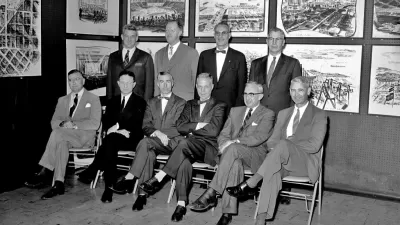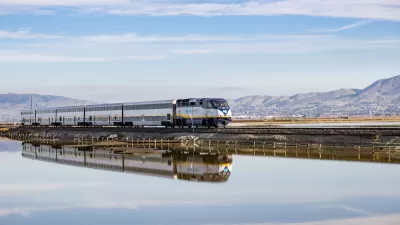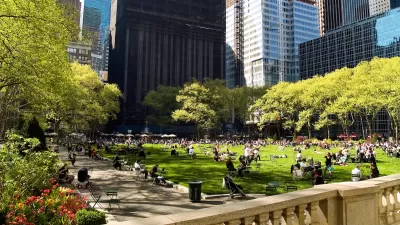Deland Chan, a lecturer in the Urban Studies program at Stanford University and co-founder of the Stanford Human Cities Initiative, makes the case for a bigger tent for planners and planning.

An article by Deland Chan suggests a new definition for the concept of "real planning" to ensure that women get more credit for the contributions to citymaking of the past, and that underrepresented groups have more of a role in the planning of the future.
For instance, Chan cites the work of "women-organized clubs that led the charge for urban beautification at the turn of the 20th century. " Plans like Charles Mulford Robinson’s General Plan for the Improvement of Colorado Springs (1912) erased the contributions of these clubs, in a familiar narrative about men consolidating and protecting their role in the making of history.
That example is a symptom of a larger problem, according to Chan—that the "planning canon, as it currently exists, reinforces a binary notion of what 'real' planning is and isn’t." While the ambitious plans, backed by institutional political and financing clout get credit, "planning from below, and 'soft,' people-centered work like community outreach, are not ascribed the same kind of value." Chan adds:
If we expanded the definition of planning, we might include Majora Carter’s workforce development and environmental justice work in the South Bronx, or Antionette Carroll’s Creative Reaction Lab, which tackles inequity in St. Louis. Carter, Carroll, and many other women leaders are not “real” (i.e. professionally trained and certified) planners, but they have shaped their cities and amplified place-based work already happening in low-income communities of color.
Finally, Chan puts out a call to action to the academic programs around the country to take a leadership role in redefining the scope of what's considered real planning:
To start, colleges and universities that make up the pipeline of future planners should rethink what they teach. It is time to recognize that our shared identity as planners is based on privileging the contributions of certain individuals and groups over others. In specific terms, institutions can reshape curricula to include missing or marginalized voices.
FULL STORY: What Counts as 'Real' City Planning?

Trump Administration Could Effectively End Housing Voucher Program
Federal officials are eyeing major cuts to the Section 8 program that helps millions of low-income households pay rent.

Planetizen Federal Action Tracker
A weekly monitor of how Trump’s orders and actions are impacting planners and planning in America.

Ken Jennings Launches Transit Web Series
The Jeopardy champ wants you to ride public transit.

Rebuilding Smarter: How LA County Is Guiding Fire-Ravaged Communities Toward Resilience
Los Angeles County is leading a coordinated effort to help fire-impacted communities rebuild with resilience by providing recovery resources, promoting fire-wise design, and aligning reconstruction with broader sustainability and climate goals.

When Borders Blur: Regional Collaboration in Action
As regional challenges outgrow city boundaries, “When Borders Blur” explores how cross-jurisdictional collaboration can drive smarter, more resilient urban planning, sharing real-world lessons from thriving partnerships across North America.

Philadelphia Is Expanding its Network of Roundabouts
Roundabouts are widely shown to decrease traffic speed, reduce congestion, and improve efficiency.
Urban Design for Planners 1: Software Tools
This six-course series explores essential urban design concepts using open source software and equips planners with the tools they need to participate fully in the urban design process.
Planning for Universal Design
Learn the tools for implementing Universal Design in planning regulations.
Ada County Highway District
Clanton & Associates, Inc.
Jessamine County Fiscal Court
Institute for Housing and Urban Development Studies (IHS)
City of Grandview
Harvard GSD Executive Education
Toledo-Lucas County Plan Commissions
Salt Lake City
NYU Wagner Graduate School of Public Service





























